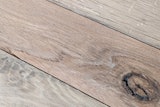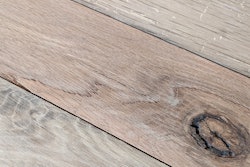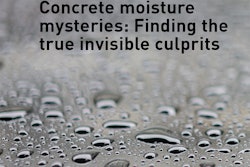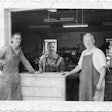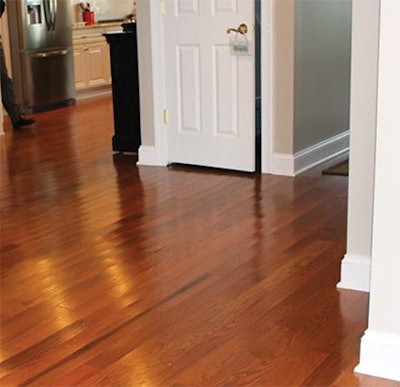
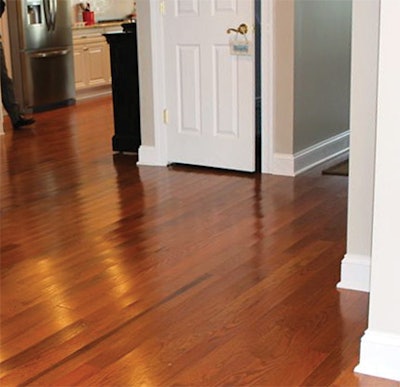 Spray foam on the underside of this floor's plywood subfloor was not a good idea as far as the wood floor was concerned.
Spray foam on the underside of this floor's plywood subfloor was not a good idea as far as the wood floor was concerned.
The Problem
I was contacted to inspect a new prefinished floor due to cupping.
What Happened
As part of a complete remodel of the home's interior, 3 1/4-inch-wide solid prefinished oak flooring was nailed to a new plywood subfloor over a crawl space. The installation took place in May. The floors were covered as other work continued. About a month after flooring installation, foam insulation was sprayed on the underside of the subflooring. There was standing water in the crawl space when the spray foam was applied. In July, cupping was noticed and then worsened. Only one sump pump was working, and a dehumidifier installed by the GC was not draining. Through the following winter, the heat was on but the flooring remained cupped, and the sump pump and dehumidifier issues had not been resolved.
The Inspection
There was cupping measuring 0.025–0.028 inch throughout the installation. There was no vapor barrier visible between the installed floor and the subfloor. In the crawl space, the underside of the subfloor was insulated with closed-cell spray foam 2–3 inches thick. The dirt floor was partially covered with black plastic; random areas of soil were exposed. A dehumidifier hanging near the crawl space hatch was on, but its red light was lit, indicating its tank was full.
Interior RH measured 53.1% at 65 degrees Fahrenheit. Moisture testing was done incrementally from the surface to 11/2 inches into the plywood subfloor. From the top down, moisture measured 8.2, 8.7, 9.0 and 11.0%. Moisture content of the crawl space hatch framing measured 16.3%. Three sets of 13 boards were measured and indicated the average board width was 3.255 inch.
Cupping is the result of a moisture imbalance from the top to the bottom of the boards; I determined the cause was moisture trapped in the plywood between the wood flooring and the spray foam insulation.
How to Fix the Floor
Since the wood moisture readings were relatively consistent from top to bottom (8.2-9.0%), the cupping may be permanent. Re-sanding is not recommended at this time because subfloor moisture is still 3% higher than the installed floor. If subfloor moisture is reduced, sanding and refinishing may be acceptable to the homeowner.
In the Future
Since closed-cell spray foam will slow down the drying of wet lumber, it should only be applied to relatively dry substrates.
RELATED: Wood Floor Cupping: Why Does it Happen & What Can You Do?










